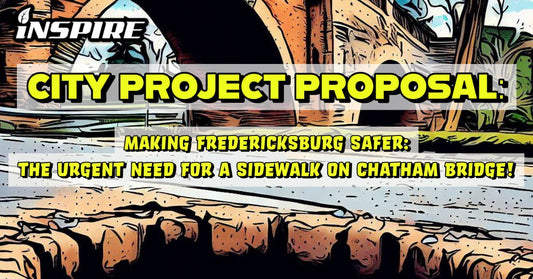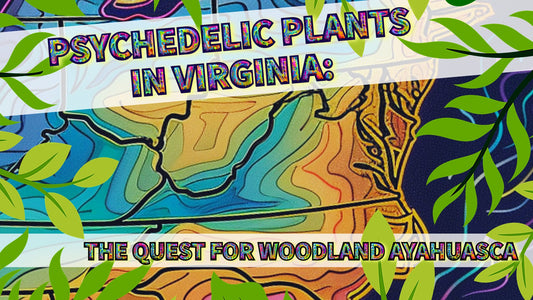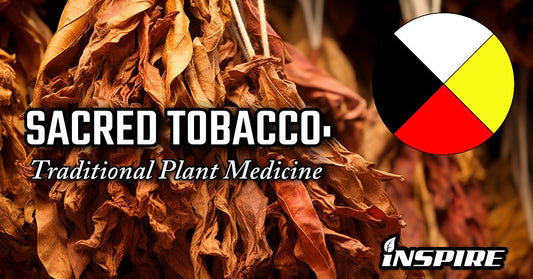Written By: Zach Champ,
Connect with me on LinkedIn!
![]()
OUR GREAT RIVERS OF THE DMV
THE RAPPAHANNOCK RIVER
The Rappahannock river’s name comes from the Native American Algonquin language.
The original name lappihane translates to mean “the river that flows and ebbs quickly”.

The Rappahannock River starts in the Blue Ridge Mountains and flows eastward into the Chesapeake Bay. It is the longest free-flowing river in Virginia and has long been essential to communities residing near it.
The river supports local agriculture, and fishing and outdoor recreational opportunities for thousands of Virginian residents.
Near Fredericksburg Virginia, the Rappahannock River has a sudden drop in depth and height.
This is known as the Fall Line and represents where the Rappahannock goes from being a peaceful large body of water to a rapid filled and rocky river!

This area was significant for historic in-land trade as it allowed large ships to sail up-river from the coast towards towns in the interior.
The City of Fredericksburg was one such town where many ships would stop to unload goods which would then be taken further out west to the Appalachian Mountains.
Significant parts of the Rappahannock River have been designated as part of the Rappahannock River Valley National Wildlife Refuge.
Established in 1996, this wildlife refuge is a home for many migratory bird species that mate and raise their young here. The Rappahannock River Valley National Wildlife Refuge is also home to many other wetland species.
Visitors to the wildlife refuge can learn about the wildlife and the ecosystem of the Piedmont Wetlands with hands-on activities and guided nature walks with Wildlife Rangers.

Like other rivers in the DMV, the Rappahannock is facing challenges that endanger its existence. For the Rappahannock River, the main issue of concern lately is Fracking. The Rappahannock River crosses over an underground geological deposit of natural gas called the Taylorsville Basin. The basin, which covers several counties contains millions of dollars worth of natural gas that can help create local jobs, provide energy, and stimulate Virginia’s economy.
However, the opportunity to extract this natural gas has become the subject of much debate because the process by which it is extracted, known as Fracking, has been known to cause severe damage and instability to the local environment. It even is linked with increasing earthquakes!It should be noted that Virginia suffered a very rare and uncharacteristic magnitude 5.8 earthquake in 2011 which many blamed on fracking operations in the nearby area.
THE POTOMAC RIVER
"The Nation's River"
The Potomac River starts as a humble spring spurting forth out of a mountain top in the Shenandoah Mountains where it trickles down-hill and slowly develops into a larger stream.
:max_bytes(150000):strip_icc()/ChesBay_Basins-58e80c0f3df78c5162a92424.jpg)
This stream continues until it becomes a larger tributary and finally ends at the Potomac Bay near the Atlantic Ocean as a grand and iconic waterway.
The Potomac still has a very scenic and wild character, remaining largely unchanged over the decades.
Traveling along the Potomac you will find waterfalls, gorges, and rapids.

Early native agricultural societies lived and thrived along the Potomac.
These Algonquin speaking peoples settled and developed the area for hundreds of years before the arrival of European settlers and colonists.
Millions of gallons of water are used from the Potomac River to supply residents of the Washington D.C metro area with clean drinking water.

One of the larger issues of concern with residents living near the Potomac River is with the billions of gallons of raw sewage water that overflows into the Potomac River each year.
THE ANACOSTIA RIVER
Piscataway Confederacy (Native Tribes) were among the original pre-European occupants of the region.
The Anacostia River derives its name from one of these Piscataway groups who also settled and lived along the river.
Today the largest threat and challenge to the health and continued vitality of the Anacostia River is the issue with water runoff and pollutants in the river. This is a serious health concern for city residents and officials.
Many people depend on Fish from the Anacostia River. One example is the Blue Catfish, which is a popular fish that is eaten by many local residents.

However, there is much concern about eating fish out of the Anacostia River. Why?
The answer lies in the way the Washington D.C water utility and infrastructure is set up, which intrinsically as part of its design and operation allows a legally defined “acceptable amount” of collected sewage and wastewater and to drain it into the Anacostia.
This sewage runoff leaves unseen bacteria in the river and can cause serious illness, disease, or even death!

This issue has been brought to the attention of various agencies and groups within the Washington D.C metropolitan community.
Efforts have been made to clean up the Anacostia and help restore it to its full glory, so it can once again contain to breathe life into the region.
THE JAMES RIVER
The James River begins in the Appalachian Mountains and flows east to the capital city of Richmond Virginia.
Native groups occupying the area originally called the river the Powhatan River before colonists from Britain renamed it in the 16th and 17th centuries.
It is the 12th largest river in the United States of America, with the James River watershed supporting nearly 2.5 million people.
The James River is one of the largest natural habitats and roosting spots for Bald Eagles in the East Coast.
It also is home to the massive and prehistoric-looking Atlantic Sturgeon, which is an endangered fish species.
Blue catfish are also found in the waters of the James River.
The James River has several world-class rapids, which adventure-sports enthusiasts seek out each year to challenge head-on.
There are many other outdoor recreational opportunities including fishing, hiking, canoeing, bird-watching, as well as swimming.
HOW YOU CAN HELP PROTECT OUR RIVERS!
Taking care of our local rivers, creeks, and watersheds is perhaps one of the easiest environmental issues to get involved with and make a big impact.
When it comes to protecting the environment, you always have to consider your daily habits and attitudes towards how you dispose of food and regular household items such as soap, toothpaste, cleaning detergents, pharmaceutical medicines, and the like. Not only that, but you often have to consider even what kind of food you eat or the products you use in the first place!
The majority of contaminants in our local water supply often come from dyes, fragrances, chemicals, and other byproducts that is found in pretty much everything made under the Sun these days!
It can be a little inconvenient, but making the personal choice to use organic and environmentally friendly products can be a great way towards really making an active step towards saving the Earth.
One of the most critical tasks you can become more aware of is how you dispose of pharmaceutical medicines.
You should never flush or pour pharmaceutical or chemical products down the sink or into your toilet or bath.

Why? Because these chemicals become part of our water supply, and many of the compounds and chemicals in it can’t be filtered out even with mechanical, chemical, and biological filtration methods! This is the true risk and cost of the industrial age!
It is unclear how our impact will affect the future of life on Earth… unless we focus on becoming more respectful and cognizant of our interactions with nature. We can all make a difference!
One of the best ways to get involved is to volunteer with a local conservation group and help with river cleanup and watershed restoration projects!

A lot of these local conservation groups can use more participation and involvement from the youth.
This is a great way to get involved with your local community and to meet and network with elders and experienced conservationists who have been watching over the local waterways for years.
It is especially important that as a community; we develop ways to help teach children to respect and appreciate our local rivers and watersheds and to understand the important ecological, cultural, and spiritual value these rivers provide to our society so that they can grow up to be proper stewards of this land.
If we don’t invest in our youth by giving them a sound knowledge and understanding of ecology and conservation, they are only going to repeat the same mistakes previous generations made in respect towards natural resource use and land management practices.








